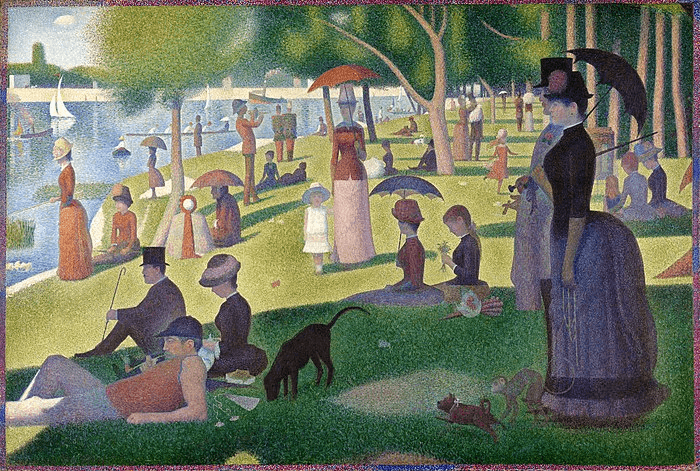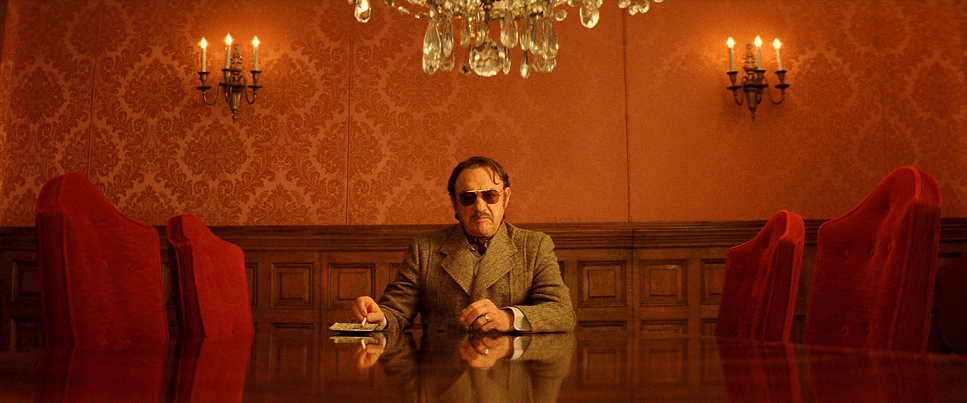Most people understand the term “positive space” simply as the subject of a work of art. While this is true, there is much more to this concept than that. What is positive space in composition and what is it used for? The presence of positive space may be a given, but how it is used and created is what impacts artistic work. Let’s take a look at a few characteristics of positive space in artistic compositions and its impact it has on viewers.
What is Positive Space in Composition?
First, let’s define positive space
To dive deeper into this concept of "space" and its function we’ll be looking at specific examples from paintings and cinematography. But before we do that, we must first understand how it applies to art as a whole by looking at the positive space art definition.
POSITIVE SPACE ART DEFINITION
What is positive space?
Positive space is a term used to refer to the areas of interest and focus in a piece of artwork. Positive space is often the subject of a work of art such as a person, landscape, or object. Even in abstract art work where there may not be a singular subject, shapes and patterns can become positive space. This is the opposite of negative space, which is the area that surrounds the subject and points of interest and is often empty or lacking detail.
What is positive space in art used for?
- Balance
- Filling the frame
- Engaging the eye
- Creating meaning
For a deep dive into all the elements of composition, download our FREE Ebook: Elements of Composition in Art, Photography & Film.
Free downloadable bonus
FREE Download
The Complete Guide to Composition Elements
When you master composition, you master the ability to tell a story, create a mood or deliver a message in a single image. Download our FREE e-book that covers the various elements of composition and the relevant techniques you can use to arrange, and compose the perfect image.
Positive Space Artwork
Creating positive space in art
Creating positive space might sound simple. After all, most of the space in a piece of artwork is dedicated to the subject. However, positive space isn’t always just the main subject. Take a look at this iconic painting by French post-Impressionist artist Georges Seurat.

A Sunday Afternoon on the Island of La Grande Jatte by Georges Seurat
The painting, appropriately titled A Sunday Afternoon on the Island of La Grande Jatte uses space in a unique way. The painting does not have a singular point of interest, but various subjects and areas of positive space paint the scene of a busy park.
Your eye might initially be the woman to the right of the frame in shadow, holding an umbrella. But you soon find that your eyes wander from person to person as if you are people watching at a park during a leisurely Sunday.
This is the function of the technique — to create points of engagement for the viewer. Even in abstract work, like Carmen Herrara’s paintings, where there is no distinct subject, positive space takes the form of the patterns, lines, and shapes used. It still engages your eye.

Positive space in art • Carmen Herrera, Green and White (1956)
As you can see from these paintings, this is a powerful tool that can be created in various ways. The distinction of positive space as simply the subject of a work of art can be misleading. Rather, use this idea of space for points of interest that engage the viewer whether it is a subject or something else.
Related Posts
What is Positive Space in Art?
Size of positive space
When considering this idea of space in your art, you must decide on the proportion of positive to negative space. In other words, you must determine the size of the occupied space in your work.
In photography and cinematography, your subject can be large enough to take over the entire frame. This is called filling the frame. Filling the frame this way draws intense focus on a specific area, object, or subject.
In cinema, this is typically achieved through close up shots and extreme close up shots in which there is almost no negative space in the frame.

Example of fill the frame • Blade Runner
Occupied space can also be used minimally in a frame that is dominated by negative space. Surrounding occupied space with more negative space is a technique used to establish scale.
This is a powerful tool in the world of filmmaking in which the scale of subjects must be captured in a 2-dimensional screen. Reducing the amount of space by moving away from it better portrays size and scale.

Example of positive space • Arrival
How you distribute space in your work depends entirely on what you want the viewer to focus on and how you want them to feel.
This is a tool that can be used for various effects based on its size and proportion to negative space.
Placement Considerations
Position of positive space
As the area of interest in an artwork, this space heavily influences not only how art looks, but also how it feels. The feeling a photograph, painting, or cinematic shot creates visually in a viewer can be attributed to where this space is positioned.
In 2-dimensional art specifically, like photography and cinematography, the position of positive space will greatly influence symmetry and weight. Distribution of this space equally on both sides of a frame can create a symmetrical balance.

What is positive space • The Place Beyond the Pines example
Positioning positive space directly in the center of the frame can also create symmetrical balance. This is a key distinction to Wes Anderson’s directing style. His images are notorious for visual balance and symmetry because of where he decides to position the points of interest in a shot.

The Royal Tenenbaums
On the other hand, positioning positive space solely to one side can create asymmetrical balance. This painting titled The Great Wave off Kanagawa by the Japanese artist Hokusai positions the positive space of the wave heavily on the left side of the woodblock print painting.

The Great Wave off Kanagawa by Hokusai
The asymmetrical balance of the painting creates a feeling of heaviness and weight on the wide of the great wave. Despite the weight of the painting falling on the right side of the painting, the negative space works to balance this asymmetry.
Positive space will exist in most works of art. That being said, its sole presence does not create beautiful work. Being intentional and expressive with how you use it is what separates beautifully moving work from mundane work.
Related Posts
Up Next
What is Negative Space?
As you can see, space has a tremendous impact on how a work of art looks and feels. However, its function is directly related to how it works with negative space. In our next article, we analyze negative space, how it is used, and the psychological effects it can create in a viewer.
Up Next: Negative Space Explained →
Showcase your vision with elegant shot lists and storyboards.
Create robust and customizable shot lists. Upload images to make storyboards and slideshows.

